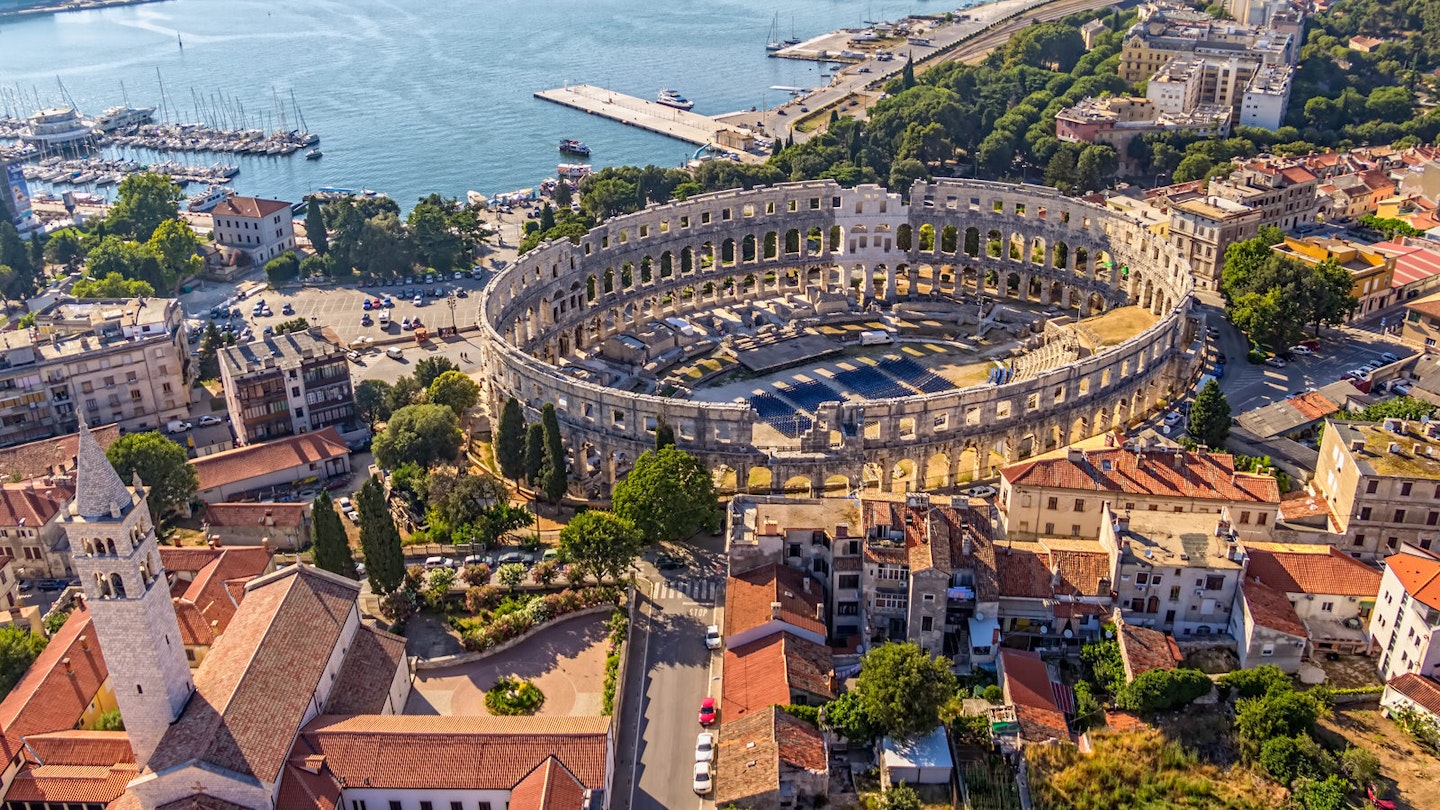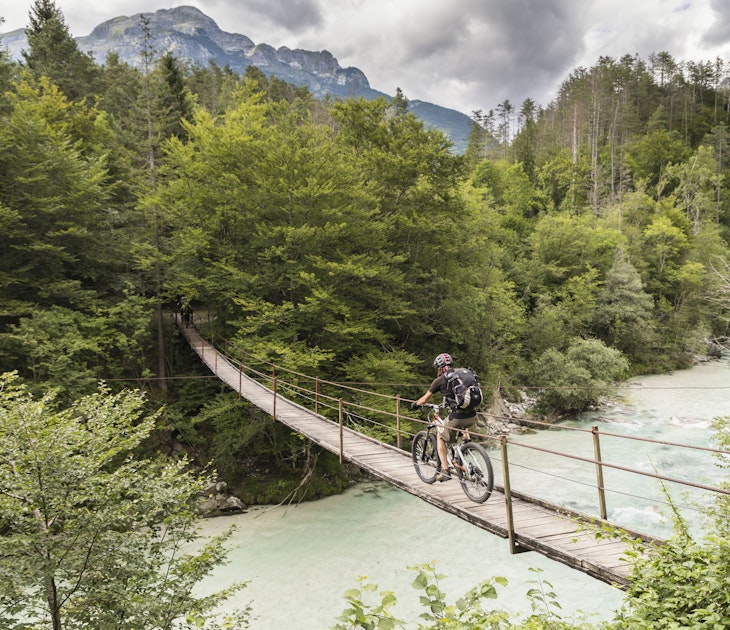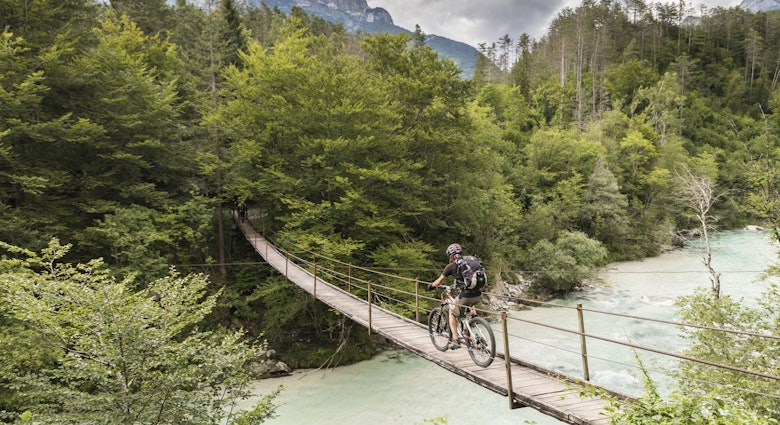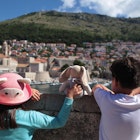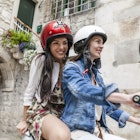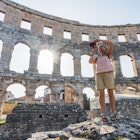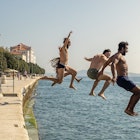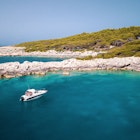Small is beautiful. Nowhere is that truer than in Istria, the compact, heart-shaped peninsula at the northern end of Croatia's coast, surrounded by the Adriatic Sea. Some of Croatia’s most attractive towns adorn its coastline, while inland folded valleys harbour ancient forests, medieval towns and excellent vineyards.
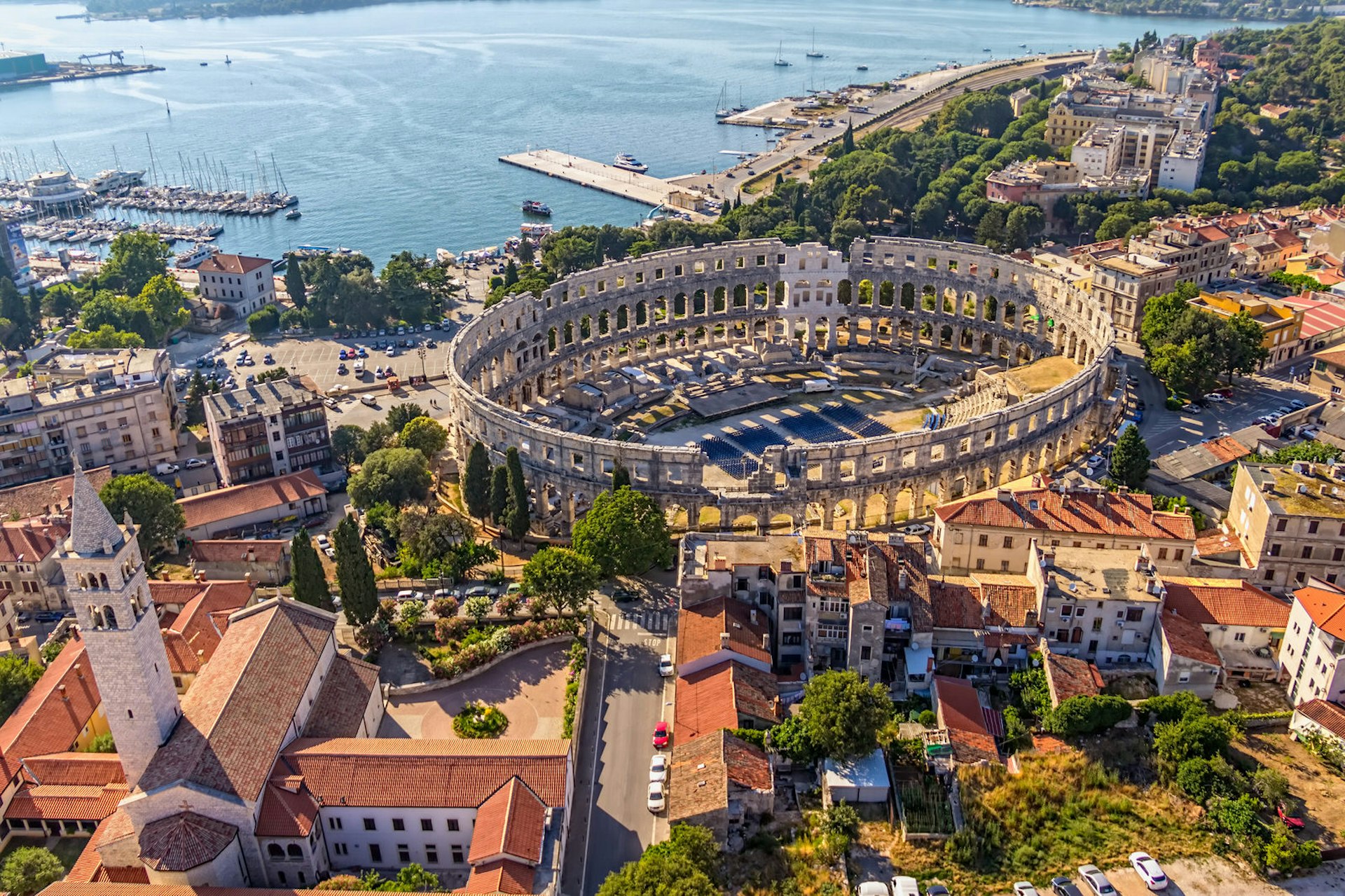
Ruins and raves in Pula
In around an hour you can drive the full length of Istria's crumpled western coastline from Umag in the north to Pula in the south, travelling through a microcosm of European history. The Romans, who had an eye for excellent real estate, conquered Istria in 178 BC and went mad building military castrums, towns, theatres, amphitheatres and factories. Their arches, gates and temples remain part of the fabric of the gritty port of Pula. Nowadays Pula's 1st-century amphitheatre – the sixth largest in the world – has traded its 20,000-strong gladiator-loving crowds for cinema buffs and music fans who come for the July film festival and concerts featuring acts like Björk, Grace Jones and Elton John.
Pula also hosts two of Croatia’s largest music festivals – Outlook and Dimensions – in the ruins of the enormous Austro-Hungarian Fort Punta Cristo. The views from here of Pula’s deep, blue bay are spectacular, as is the evening light show, when the cranes of the Uljanik shipyard are illuminated as part of the contemporary art installation Lighting Giants.
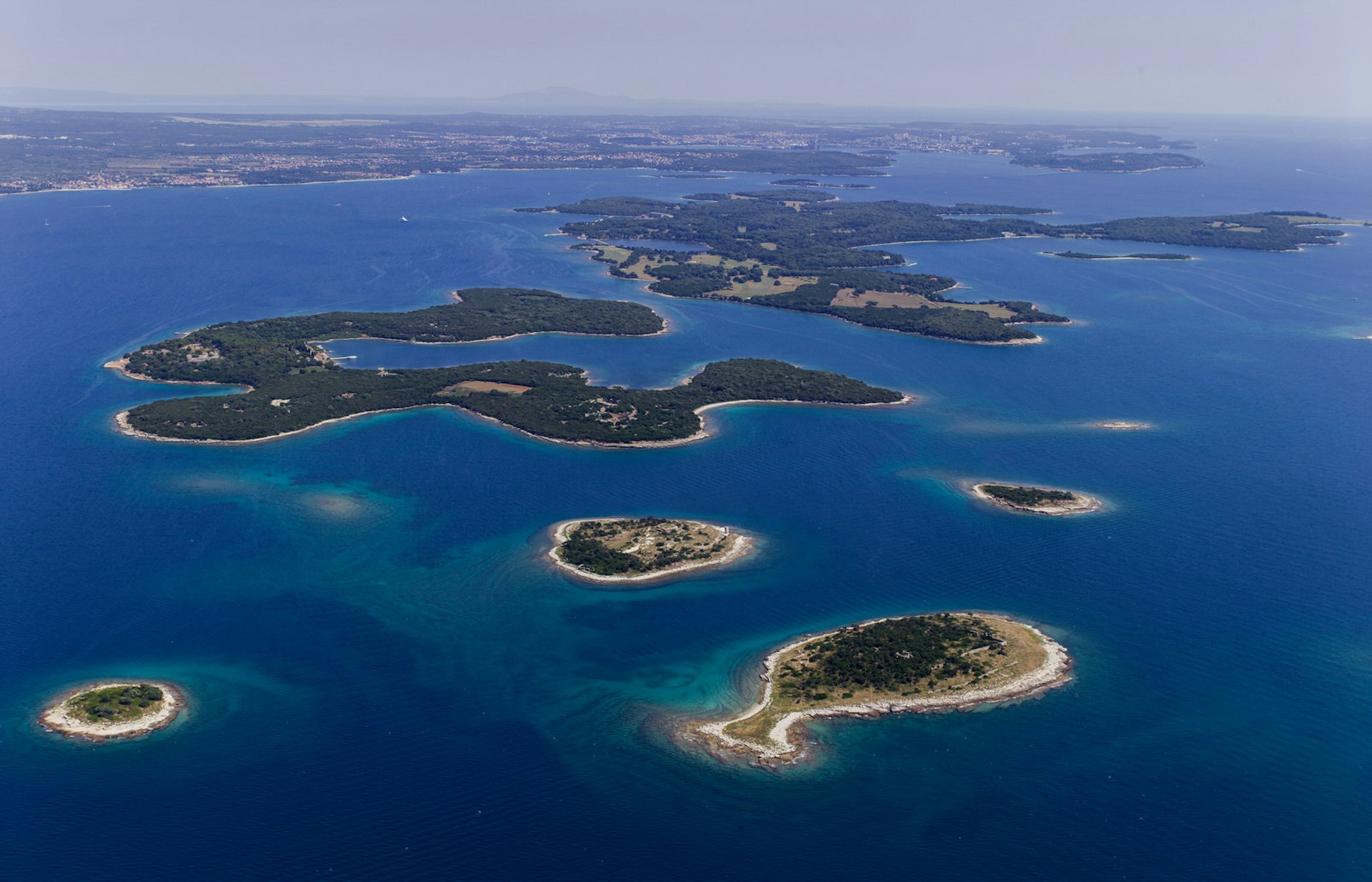
Stepping back in time on the Brijuni Islands
Three kilometres across the Fažana Channel from Fort Punta Cristo you can spy the 14 Brijuni Islands. They sit basking in a microclimate so gentle that it was once the site of a Roman resort and royal villa. The ruins remain beside lovely Verige Bay on Veli Brijun, which is now a protected national park. A 20-minute ferry transports leisure-seekers across the sparkling sea from Fažana. The ticket includes a guided tour, or you can pick up a bike or electric cart and join other holidaymakers cycling, golfing, sailing and playing tennis like a scene from a 1950s holiday ad.
The golf course and hotels were built in the 19th century by Austrian industrialist Paul Kupelwieser, a thoughtful patron who laid the first water pipes, installed heated sea pools and even had renowned microbiologist Robert Koch eradicate malaria on the island. Soon Viennese psychiatrists were sending famous patients – including James Joyce, Thomas Mann, Gustav Klimt and the Archduke of Austria – here to consult with Dr Otto Lenz, the island's doctor. The Archduke liked it so much that he used the island for state visits. So did President Tito of Yugoslavia, who made it his official summer residence for six months of the year. He entertained over 90 heads of state here, who brought a strange menagerie of animals, including elephants, zebra and llamas, much like the gifts Pula’s Roman rulers received for their Arena.

Riviera life on the west coast
Further up the west coast, Poreč was originally a Roman town too. The town's most famous building is the 6th-century Euphrasian Basilica with Unesco-listed golden apse mosaics and beguiling sea views from its bell tower. Venice lies just 54 nautical miles west of here and in summer boats take business people and holidaymakers back and forth, as they did when the city was under Venetian rule between 1267 and 1797. Modern-day travellers visit bars in Gothic palazzi and dine in smart restaurants in Hapsburg villas the colour of faded cotton, such as Sv Nikola. The Venetians were in nearby Vrsar as well, excavating Istrian stone from the nearby Montraker quarry for their palaces. When international playboy Giacomo Casanova visited in 1743, he remarked on the excellent Refosco wines.
Despite its rustic past as a fishing village, contemporary Rovinj is rather chic. Venetian boat builders must have felt at home on Istria's west coast, as they crowded onto Rovinj island, building candy-coloured 'tower' blocks all the way up to St Euphemia's Church. In summer, Via Grisia becomes an open-air gallery and at the Batana Ecomuseum you can book a tour of the off-shore islands in a flat-bottomed Venetian boat, ending with a glass of wine at Spacio accompanied by sea shanties. Designer digs include Hotel Adriatic and the stunning Hotel Lone set on the cedar- and cypress-lined Golden Cape, while at the top of town, beneath a bower of wisteria, Monte holds Istria’s first Michelin star.
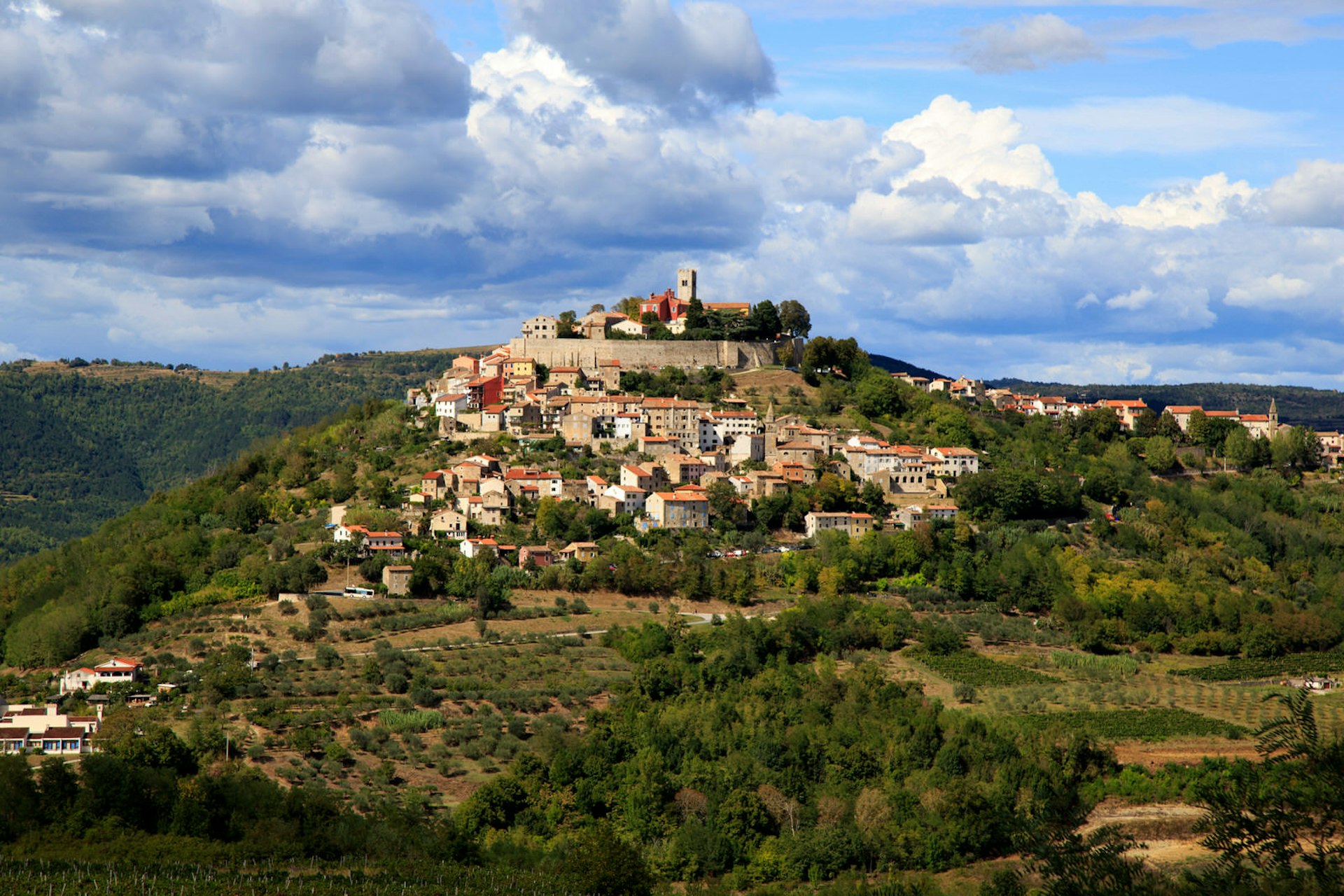
Taking it slow in the heart of Istria
The sweet mussels and oysters on your plate at Monte come from the Lim estuary, a 20-minute drive north of Rovinj. Here a mini-canyon slices 10km inland. Bikers cycle up the valley to Pazin where the Pazinčica river disappears in a karst chasm beneath a monumental castle. A sea of green surrounds Pazin: olive groves, holm oaks, pines, elm trees and vines roll away in waves, punctuated by the bright terracotta rooftops of tiny villages.
North of here, medieval Motovun is perched on a hill, where paragliders launch off like tropical birds. It’s famous for its Teran wine and fragrant white truffles that rival those of Alba in Italy. Beneath the citadel, Roxanich is a state-of-the-art wine hotel with a 55,000-bottle cellar where you can retire after truffle hunts in the Motovun forest. The Karlić family have been hunting here for three generations. Join them for early morning forays and decadent breakfasts of truffled eggs and wine.
The Mirna valley is gaining a gourmet reputation thanks to its farm-to-fork restaurants, wineries and family-run hotels like San Rocco. Village-hop from Hum to Oprtalj, and from Grožnjan to Momjan, exploring places that look like scenes from a Grimm fairytale. In winter, Escheresque stairs lead to shuttered houses covered in dark green vines, but come summer you’ll find a folksy artist community in Grožnjan, a black-truffle fair in Oprtalj and the renowned Kozlović winery in Momjan, making a Muscat that tastes of honey and ripe pears.

Off-the-beaten-path adventures
Mirna means 'quiet' in Croatian and the valley is a bucolic place, but there are other paths even less trodden. The 78km Parenzana Bike Trail traces the narrow-gauge railway line that once connected Poreč to Trieste via Buje, Grožnjan, Oprtalj, Motovun, Vižinada and Nova Vas, swooping along the coast and through old rail tunnels. Mussolini ripped up the rail tracks for munition, little thinking that his legacy would provide so much fun.
If hiking is more your thing, head west to the Učka Nature Park where the Vela Draga trail leads through a precipitous canyon, characterised by strange limestone columns created by torrents of water. Climbers cling to bone-white rock faces like sun-stunned insects. Finally, at the southernmost tip of the peninsula is Kamenjak Nature Park with its sculpted bays and translucent water. It’s a wild, fragrant place blanketed with aromatic shrubs and wild orchids and a hundred-odd dinosaur footprints. There’s nothing to do here except swim, windsurf, snorkel, picnic, sail and sunbathe. It’s just perfect.
Paula Hardy travelled to Istria with support from the Istria Tourist Board. Lonely Planet contributors do not accept freebies in exchange for positive coverage.
https://shop.lonelyplanet.com/products/croatia-travel-guide-10

